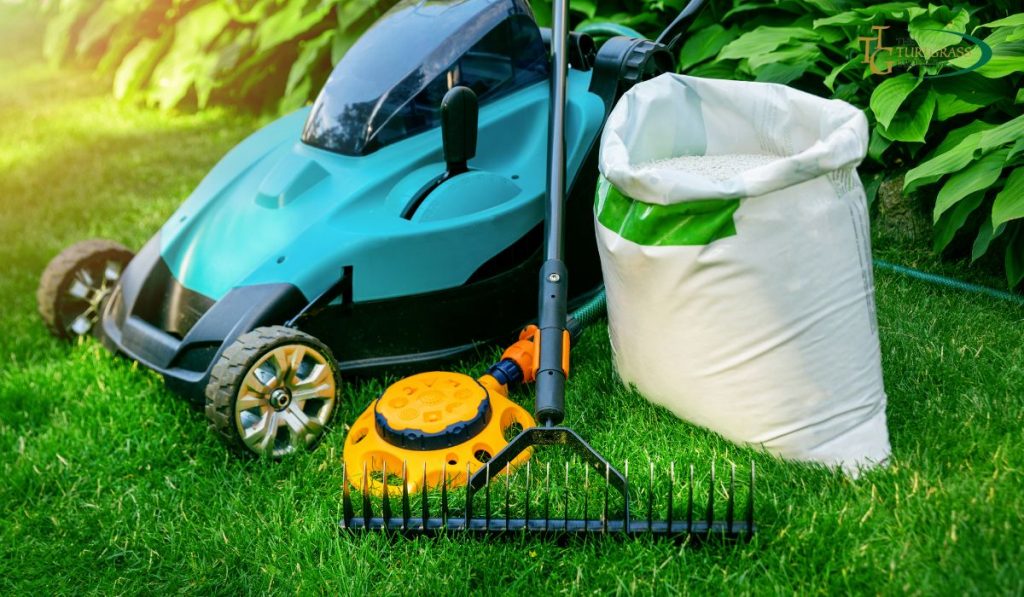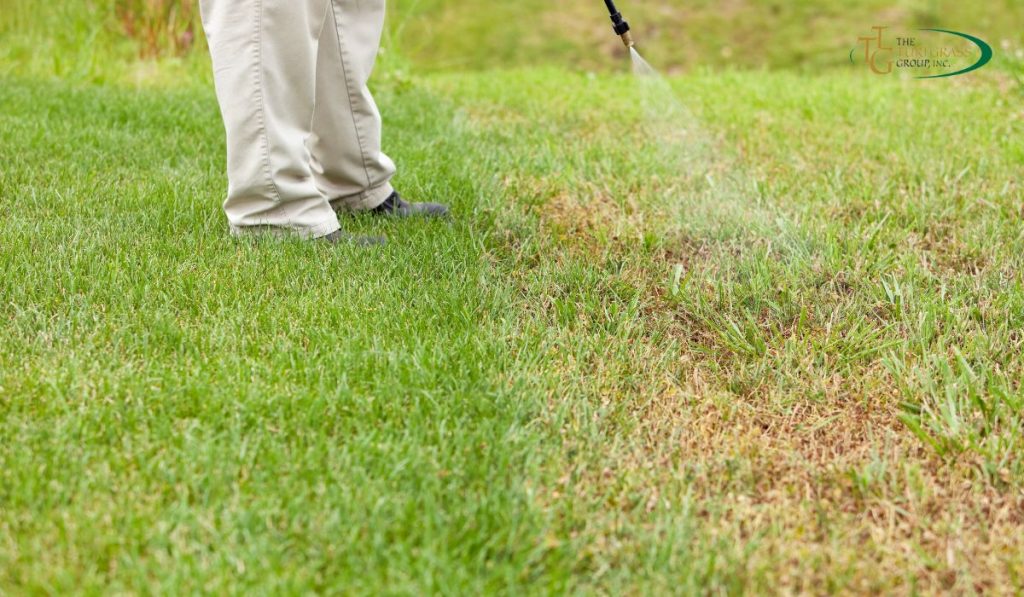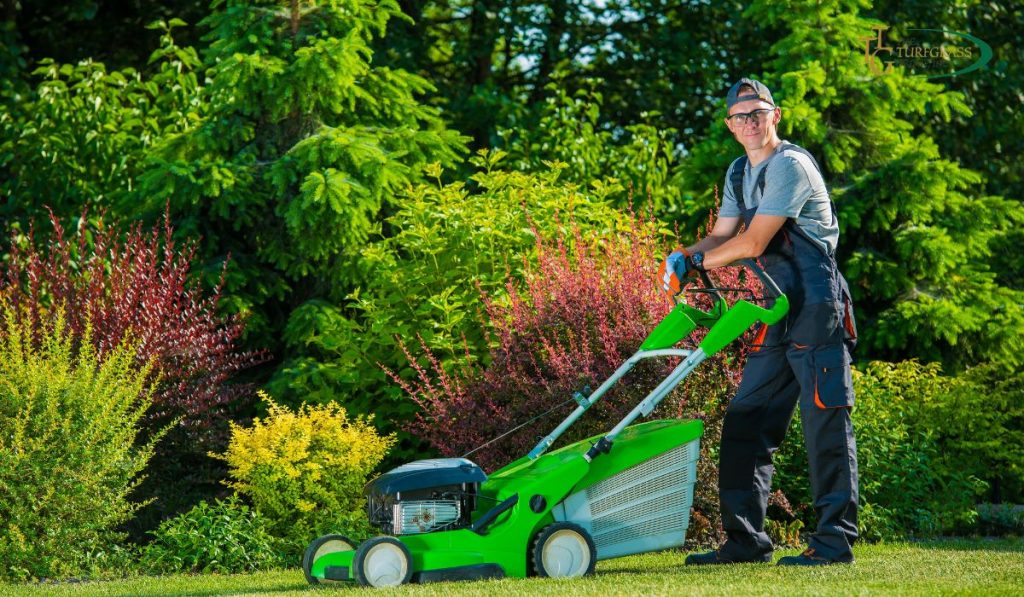
When the scorching August heat arrives, it’s crucial to take care of your lawn to ensure it remains healthy and vibrant.
The intense heat and dry conditions can challenge maintaining a beautiful lawn.
However, with the proper knowledge and strategies, you can keep your lawn in excellent condition throughout the summer.
This article will discuss essential lawn care tips to help your yard withstand the August heat.
Understanding the Impact of August Heat on Lawns
The August heat can be particularly harsh on lawns, causing stress and damage to the grass.
The intense sun, high temperatures, and lack of rainfall can lead to drought stress, browning, and even death of the grass.
Understanding the challenges your lawn faces during this period is crucial to implement the appropriate care.
Watering Techniques for Hot Summer Days
Proper watering is crucial during the hot summer months. Water deeply but infrequently to encourage profound root growth.
Early morning watering is ideal as it allows the grass to dry before evening, reducing the risk of fungal diseases.
Adjust your irrigation system to deliver one inch of water per week, including rainfall.
Proper Mowing Practices in High Temperatures
When mowing your lawn in August, adjust the cutting height to a higher setting.
Taller grass shades the soil, reducing moisture loss and weed growth.
Additionally, leave the grass clippings on the lawn as they provide valuable nutrients and help retain moisture.
Avoid mowing during the hottest part of the day to prevent stress on the grass.

Implementing Strategic Shade and Sunlight Solutions
Strategic shade and sunlight solutions can significantly affect your lawn’s health during the August heat.
Consider planting trees or installing shade structures to provide relief from the sun’s intensity.
On the other hand, trim back tree branches that obstruct sunlight to ensure your grass receives enough light for photosynthesis.
Dealing with Common Lawn Pests During Summer
August is a prime time for various lawn pests, such as grubs and chinch bugs, to thrive.
Monitor your lawn for signs of pest damage and apply appropriate treatments if necessary.
It’s essential to address pest issues promptly to prevent further damage and keep your property healthy.
Fertilization and Weed Control in August
During the hot summer, it’s best to avoid fertilizing your lawn as it can promote excessive growth and stress the grass.
However, spot-treating weeds is recommended to prevent them from competing with the grass for essential nutrients.
Use herbicides selectively and according to the manufacturer’s instructions.
The Importance of Aeration and Overseeding
Aeration and overseeding are essential practices to maintain a healthy lawn in August.
Aerating the soil helps improve water penetration and nutrient absorption while overseeding fills in bare spots and strengthens the overall grass density.
Consider hiring a professional for these services or renting specialized equipment for DIY projects.
Protecting Your Lawn from Heat Stress
To protect your lawn from heat stress:
- Avoid foot traffic as much as possible during the hottest parts of the day.
- Discourage parking or placing heavy objects on the grass, which can cause damage and compaction.
- Consider applying a light layer of mulch around trees and flower beds to conserve soil moisture and reduce heat absorption.
Creating a Maintenance Schedule for August
Developing a maintenance schedule is crucial for keeping your lawn healthy throughout August.
This schedule should include regular watering, mowing, and monitoring for pests or diseases.
Following a consistent routine can prevent potential issues and ensure your lawn thrives despite the challenging weather conditions.
Choosing the Right Grass Species for Your Region
Selecting the appropriate grass species for your region ensures a healthy and resilient lawn.
Different grass species have varying tolerance to heat, drought, and other environmental factors.
Consult with a local expert or extension service to determine the best grass species suited for your area.
Preventing Lawn Diseases in Hot Weather
Hot weather can create favorable conditions for the development of lawn diseases, such as brown patches and dollar spots.
To prevent these issues:
- Avoid overwatering and watering in the evening.
- Improve airflow by pruning overhanging branches and thinning out dense vegetation.
- If necessary, apply fungicides according to the instructions.
Identifying and Repairing Lawn Damage
Despite your best efforts, your lawn may still experience damage during the August heat.
It’s essential to identify the cause of the damage, whether it’s due to pests, diseases, or environmental stress.
Once identified, take appropriate measures to repair the damage, such as reseeding, sodding, or treating pests and diseases.
Tips for Enhancing Curb Appeal during August
Maintaining an aesthetically pleasing lawn adds to the overall curb appeal of your property.
In August, focus on regular mowing, edging, and removing weeds or debris.
Enhance flower beds with colorful summer blooms and add decorative elements such as potted plants or garden ornaments to create visual interest.
The Benefits of Professional Lawn Care Services
Professional lawn care services offer numerous benefits for those who prefer a hassle-free approach to lawn care.
These experts have the knowledge, experience, and equipment to handle all aspects of lawn maintenance effectively.
Hiring professionals can save you time and ensure your lawn receives the care it needs to thrive.
Conclusion
Taking care of your lawn during the August heat is essential to maintain its health and beauty.
By following the tips outlined in this article, including proper watering, mowing, pest control, and maintenance practices, you can ensure that your lawn remains vibrant despite scorching temperatures.
Remember, a healthy lawn enhances the aesthetic appeal of your property and provides a pleasant outdoor space for you and your family to enjoy.
FAQs
How often should I water my lawn in August?
Watering your lawn deeply twice a week is recommended, providing around one inch of water, including rainfall.
Can I fertilize my lawn in August?
It’s best to avoid fertilizing your lawn in August as it can stress the grass. However, spot-treating weeds is recommended.
Should I mow my lawn during the hottest part of the day?
No, avoiding mowing during the hottest part of the day is advisable to prevent stress on the grass.

What can I do to protect my lawn from heat stress?
To protect your lawn from heat stress, avoid foot traffic during the hottest times and consider applying a light layer of mulch.
Is it necessary to aerate my lawn in August?
Aerating your lawn in August can be beneficial as it improves water penetration and nutrient absorption. However, it’s best to consult a professional or local expert to determine if your lawn requires explicit aeration.
How can I prevent lawn pests from damaging my lawn in August?
To prevent lawn pests in August, maintain a healthy lawn by following proper watering and mowing practices. Additionally, regularly monitor your property for signs of problems and consider applying appropriate preventive treatments.
Can I use mulch on my lawn during August?
While mulch is typically used in flower beds and around trees, it is not recommended to use it directly on your lawn in August. Mulch can smother the grass and prevent proper growth. It’s best to focus on watering and other lawn care practices to protect your property during the hot summer.
Should I adjust my irrigation system during August?
Adjusting your irrigation system during August to account for the hot weather is essential. Aim to deliver one inch of water per week, including rainfall. Monitor your lawn’s moisture levels and adjust accordingly to prevent overwatering or underwatering.
Can I overseed my lawn in August?
Overseeding is typically done in cooler months for optimal results. August may not be the best time to overseed, as the heat and dry conditions can make it challenging for new grass to establish. It’s advisable to wait until the fall when temperatures are more relaxed and favorable for successful overseeding.
Remember, consulting with local lawn care professionals or extension services is always recommended for personalized advice based on your specific region and lawn conditions.